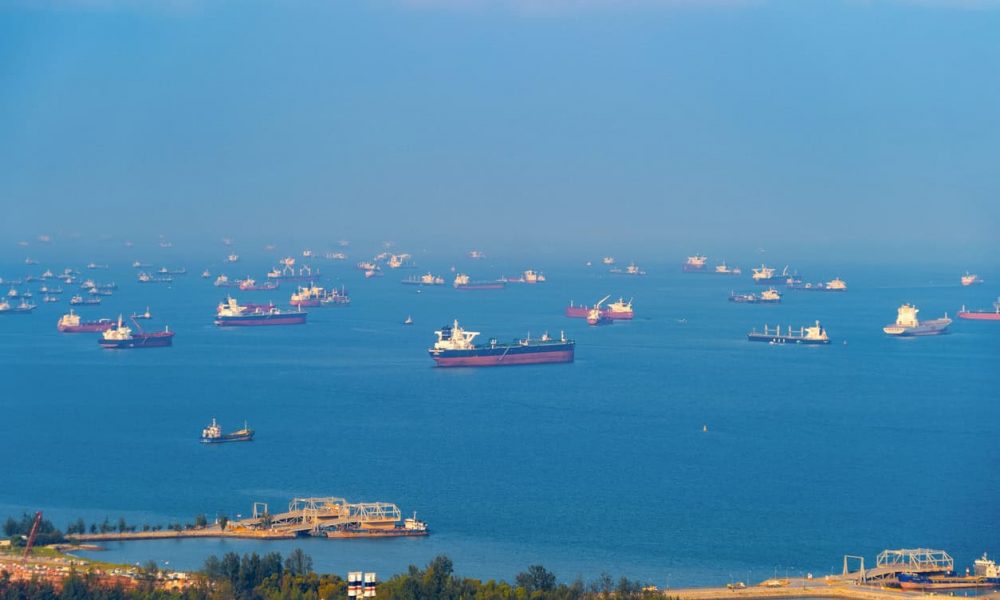The global trade landscape is currently experiencing a substantial increase in activity, leading to record-high ocean freight rates. This pattern mirrors the surge in demand that disrupted international trade three years ago during the pandemic. Shippers, having learned important lessons from that time, are now adapting their strategies by advancing their imports in preparation for the peak season and potential capacity limitations.”
Factors Contributing to the Surge
The current increase in freight rates is being driven by several key factors:
- Port Congestion: Severe congestion in ports across China and other Asian countries is straining the container shipping market. For example, in Singapore, berthing delays have extended to seven days, far exceeding the usual half-day wait. This congestion significantly impacts vessel space and equipment availability.
- Labour Strikes: The threat of a Canadian rail strike and ongoing contract negotiations for dockworkers in both the U.S. and Canada are causing concern among companies. These labor disputes have the potential to disrupt port operations and delay the movement of goods.
- Geopolitical Tensions: Heightened trade tensions between the U.S. and China are adding to the uncertainty and costs in shipping. Recent announcements of additional tariffs on Chinese imports by the U.S. government have led companies to expedite their stockpiling efforts before the tariffs take effect.
- Red Sea Attacks: Incidents in the Red Sea have forced carriers to reroute their vessels around southern Africa instead of using the Suez Canal. This detour increases transit times and exacerbates the shortage of capacity and equipment.
Impact on Businesses
The rising freight rates have several implications for businesses:
Increased Costs: The cost of shipping a 40-foot container from Asia to the U.S. West Coast has surged by 13.4%, reaching $4,915 by the end of May. This is a threefold increase compared to late December, reflecting the market’s tightness.
Inventory Management: Importers and exporters typically experience a surge in shipments from July to September as retailers prepare for back-to-school, Halloween, and year-end holiday sales. This early peak season is already making a significant impact, with many carriers reporting fully booked vessels.
Strategies for Adaptation
To navigate these challenging conditions, businesses can adopt several strategies:
- Early Ordering: Companies should incorporate extra lead time into their orders to avoid the peak season rush and secure lower rates. Early ordering helps mitigate the impact of sudden rate hikes and ensures timely delivery of goods.
- Diversifying Supply Chains: Exploring alternative routes and ports can help businesses avoid the most congested areas and secure better rates. Partnering with multiple carriers also provides competitive rates and ensures shipping options are available during peak times.
- Utilizing Freight Forwarders: Collaborating with reliable freight forwarders can provide strategic planning, risk mitigation, and proactive measures to ensure a resilient supply chain. Freight forwarders can optimize transportation routes, select efficient modes of transport, and navigate disruptions seamlessly.
- Leveraging Technology: Implementing advanced tracking systems and data analytics can help businesses gain real-time visibility into shipping operations, forecast demand, and optimize shipping schedules. This enables proactive management of delays and disruptions.
Conclusion
The current surge in global trade and freight rates presents significant challenges for businesses. However, by understanding the contributing factors and implementing strategic measures, companies can navigate these turbulent times effectively. At Universal Logistics, we recommend understanding that rates will continue to increase during this period. By staying informed, planning ahead, and leveraging the expertise of logistics providers, businesses can maintain resilient and cost-effective supply chains.
For more detailed strategies and assistance, contact our experts at Universal Logistics.



















